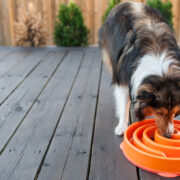When your dog gets excited, he most likely wags his tail and jumps around. You might also notice that your dog pees when he’s excited. This is often the result of a physical response called submissive urination. It’s completely normal in young dogs.
You have to remember that your dog feels that both you and he are part of a pack. He recognizes that you’re the dominant figure in the pack. It’s typical for submissive urination to occur as a way of acknowledging that dominance.
You’ll often see submissive postures along with urination if the behavior is dominance-related. These are postures where your dog’s tail is down, he may roll over on this stomach. and he will likely avoid direct eye contact. This is all dog body language that translates into, “I know you’re the boss.”
Submissive urination also happens when your dog feels frightened or anxious as well as simply excited. It’s equally common in both male dogs and female dogs. Usually, puppies will outgrow this behavior, but it’s not uncommon for inappropriate urination to occur in older dogs if you scold them or if they are startled by something like a loud noise.
The question is when you should worry about submissive urination? Let’s look at a few situations where it may indicate a problem you should be concerned about.
Medical Causes for Inappropriate Urination
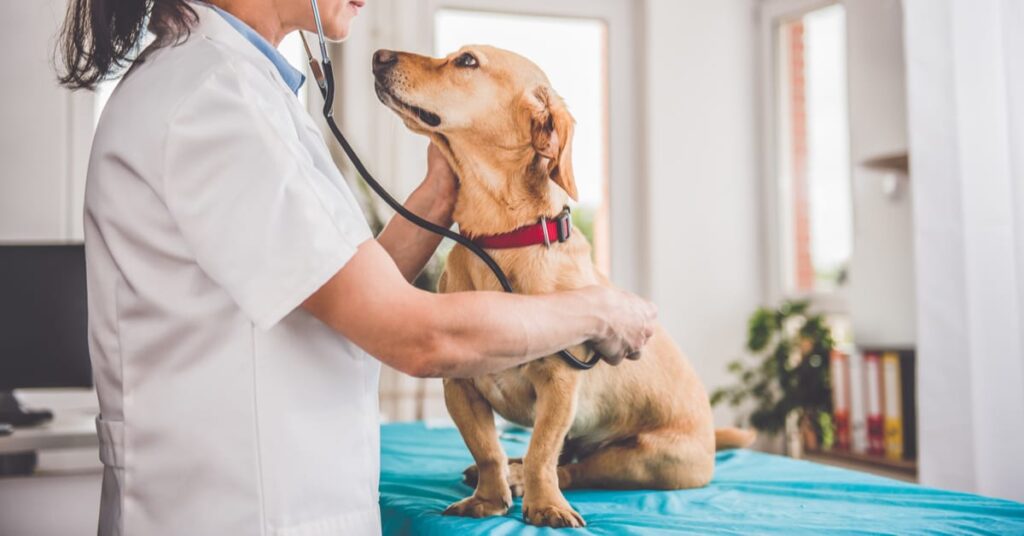
If you think that it’s possible your dog’s urination may not be related to simple submissive behavior, there are some medical causes for frequent urination. You’ll likely see that your dog’s urination is not done on purpose, but you want to think about whether or not he can control it.
If you think your dog can’t control his urination, that’s a condition called incontinence, and it may be a symptom of a health problem. If your dog seems to have lost bladder control, it could mean he has a weak bladder, but it could also mean he has a urinary tract infection (UTI).
UTIs are not an uncommon problem, and therefore, if you see your dog urinating frequently and notice he lacks bladder control, you probably want to take him to the vet to make sure there isn’t a medical cause behind his behavior. UTIs can be treated fairly easily with antibiotics.
It’s also possible that if you’ve changed your dog’s diet recently, his behavior might simply reflect a change in bathroom habits as a result. Still, it’s a good idea to be safe rather than sorry. After all, you two are best friends, and you don’t want anything happening to him.
Submissive Peeing as a Behavioral Issue
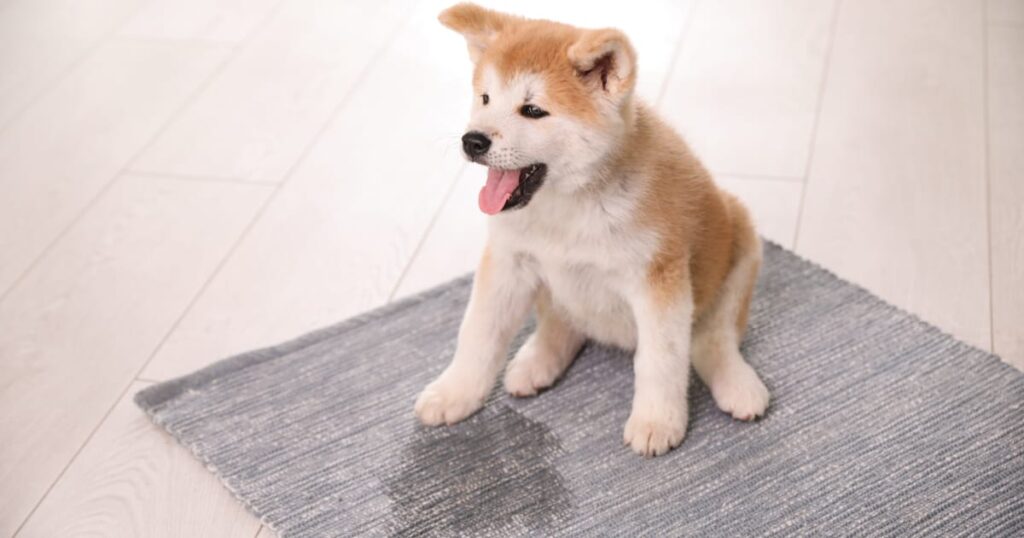
Submissive peeing is a normal part of young dog behavior. They are learning their rank in the group, and they are showing that they know their place. But if young dogs don’t learn how to control their urge to pee, it can become a behavioral issue as they get older.
Submissive peeing is common in dogs that are younger than 12 weeks of age. Of course, they are in a more vulnerable state at such a young age, and normally, young dogs will grow out of inappropriate urination. As you implement appropriate housetraining, they learn to control themselves and can hold their pee.
If your dog is older than 12 weeks or an adult dog and still exhibits submissive urination, that may be the result of incomplete housetraining. They may not yet have learned when it is appropriate to urinate and where. This may be something you see more commonly in adopted dogs because they have not yet learned the rules in their new house.
Submissive Peeing as a Sign of Insecurity

If you don’t implement and complete proper housetraining, your dog may develop a habit of submissive urination when they feel insecure. It’s also possible your best friend was inappropriately punished in the past, and they are frightened that will happen again.
Another cause of insecurity is what is known as separation anxiety. This can also result in submissive peeing. Your pooch may become emotionally distressed when he sees you’re leaving, and he may potty a little as a result.
When you come back home, he may experience excited peeing. This is actually different from submissive urination, but in this case, it is still a result of insecurity your dog has about you leaving.
There are some natural ways you can help alleviate your dog’s anxiety, and that may help when you leave the house, but the problem still may require some dog training too.
Urine marking
Another behavioral issue you might see that involves urination is urine marking. It’s important to note that this is different from submissive urination. In the case of urine marking, your dog is not peeing because of submission. In fact, it’s the opposite — he’s peeing to show dominance.
Okay, so you know your dog’s inappropriate urination is not medical but rather a behavioral issue, so, what do you do? Well, this is where dog training can help.
Dog Training to Stop Submissive Urination
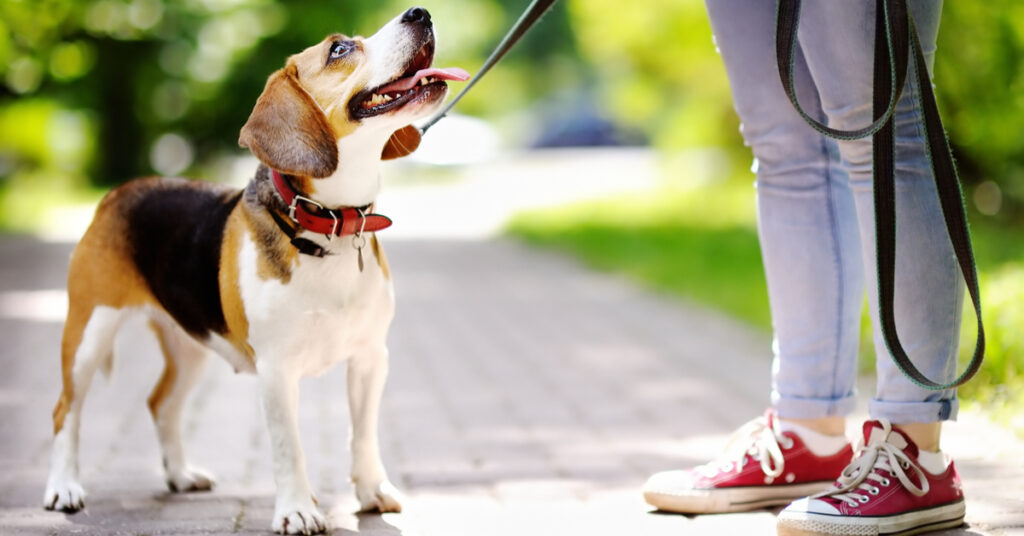
It really doesn’t work to reprimand your dog when he is peeing submissively. That will, in fact, make the problem worse because your display of dominance will make him more insecure. Instead, it’s helpful to implement a plan of dog training that includes behavior modification.
The first part of this plan is to recognize the signals your dog gives when he’s feeling the need to do a little submissive urination. Typically, he will raise his front paws, tuck his tail between his legs, flatten his ears, and lick. He will also do what is known as a submissive grin. This is where he seems to be smiling as he licks at the air.
When you see this type of dog behavior, you want to react quickly to quell your dog’s excitement and urge to urinate out of submissiveness. Rather than reprimand him, take him outside immediately so that you can show him this is the appropriate place to pee.
If you’ve just returned home, you can distract him with a treat so that he has something productive to do with his excited energy. The American Kennel Club (AKC) also recommends ignoring your dog for a few minutes when you get home initially to let him calm down before you pay attention to him.
A proper greeting
When you are ready to greet him, get down on your dog’s level and keep your greetings low-key so he doesn’t see you acting in a dominant manner. You can also train your dog to ‘sit’ or ‘shake’ when he’s greeting someone by rewarding him with positive reinforcement for that behavior. Ask any other family members to do the same when they are greeting the dog as well.
That will keep the dog training consistent and help your puppy’s socialization. It’s important to make sure he feels comfortable meeting new people as part of that socialization process, so you might even practice it with people who are strangers to your dog.
Inappropriate Dog Training Methods
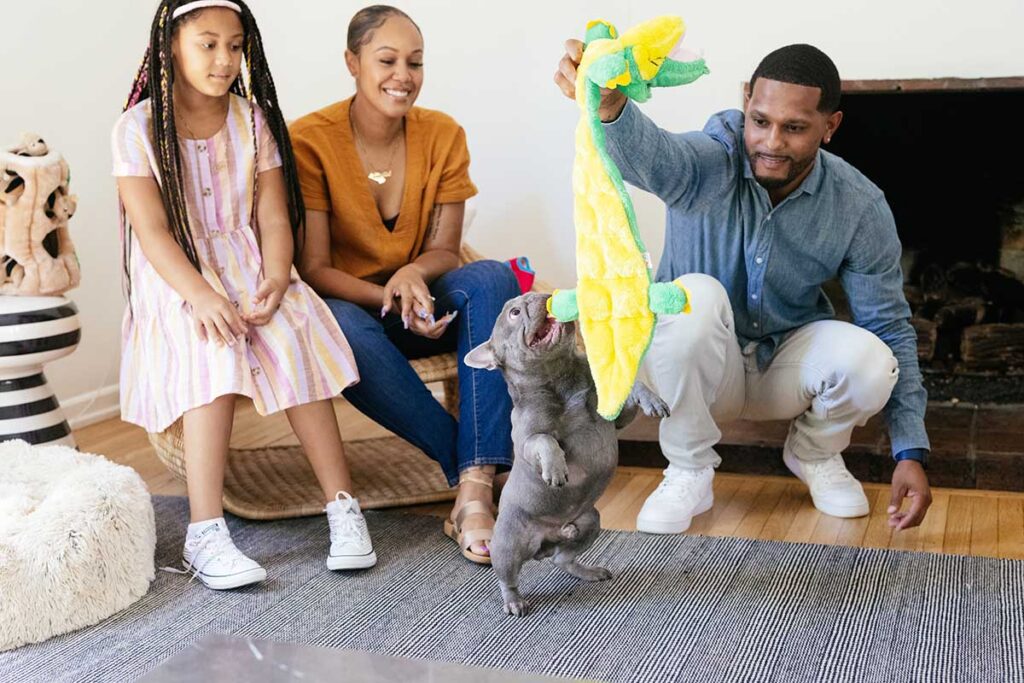
When you’re training your dog, you always want to use positive reinforcement methods to stop submissive urination. Toward that end, keep your commands positive, consistent, and encouraging.
Don’t make a negative face like a scowl or a frown at him since it can confuse your dog. Also, while his behavior might be frustrating, if you react with angry comments, you’ll scare him and make the submissive peeing worse.
If your dog is in the act of submissive urination, don’t walk away. Instead, redirect his attention to something like a treat that will interest him and help build his confidence. While you do that, use the commands that he is familiar with so that you can reinforce those.
If you feel like it’s just too frustrating for you to handle this problem on your own, it might be worth considering contacting a dog trainer who can help you and your dog.
Final Thoughts

Submissive urination is a common problem for pet owners. Sometimes, it’s just an act of excitement urination rather than a true show of submissiveness, but it’s something that you need to make sure your puppy outgrows.
If you’ve got an adult dog or your puppy doesn’t appear to be outgrowing the problem, it may be time to make sure it’s not a health issue, and then, it’s time for some dog training to help solve the problem.
Proper socialization and positive reinforcement can help your dog overcome any feelings of insecurity when you leave or when meeting new people or dogs. As with any kind of dog behavior, understanding it is key to solving any behavioral issues that may develop.
Ensuring your dog’s wellness means more than simply making sure he’s physically healthy, you also want him to be happy!
